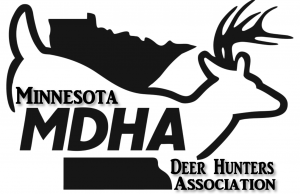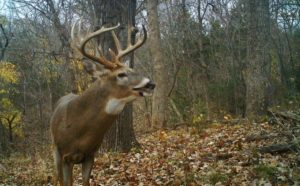At its annual meeting on February 23 in Grand Rapids, members of the Minnesota Deer Hunting Association (MDHA) voted to support a number of critical legislative initiatives intended to help protect Minnesota’s wild deer herd from chronic wasting disease (CWD).

“Minnesota Deer Hunting Association members recognize that CWD is the biggest threat to Minnesota’s wild deer herd,” said MDHA Executive Director, Craig Engwall. “As Minnesota’s leading deer organization, our group will do everything it can to help protect Minnesota’s deer, as well as the state’s deer hunting tradition.”
MDHA is calling on the Governor and Legislature to agree to support and implement a number of key initiatives this year to fight CWD, including:
Requiring double fencing on all captive deer farms; Mandatory depopulation of all cervids (hoofed animals) on farms with a CWD-positive test; Moratorium on any new cervid farms and a voluntary buyout of existing cervid farms; Prohibition of interstate movement of both captive and wild cervids; Prohibition of interstate movement of any captive cervid byproducts, including blood and semen; Elimination of antler point restrictions (APR) statewide; Dedication of an additional $0.50 of current deer license fees to wild deer health, making the total from each deer license $1.00.
Engwall added, “With the discovery of a single CWD-positive wild deer within a half-mile of a CWD-infected captive cervid farm in Crow Wing County, as well as the 40-plus wild deer testing CWD-positive in Southeast Minnesota, it is imperative that Minnesota act now to protect its wild deer herd. CWD threatens not only Minnesota’s deer and deer hunting tradition, it threatens the nearly $1 billion economic impact that deer hunting contributes to Minnesota.”
Minnesota DNR Commissioner Sarah Strommen addressed the Minnesota Deer Hunting Association membership at the annual meeting, providing an update on DNR’s CWD response plan in Crow Wing County and Southeast Minnesota. Strommen also discussed Governor Tim Walz’s budget proposal to provide $4.57 million to fight CWD.
“We are pleased with the actions DNR has taken to address CWD, as well as the governor’s budget proposal to add funding to the CWD fight. That comes in addition to the dollars already provided by Minnesota’s deer hunters,” stated Engwall, “We urge the DNR, the Governor, and the Legislature to work together to vigorously pursue these measures.”
This is what the effect of CWD looks like on deer:
About MDHA: The Minnesota Deer Hunting Association was founded in 1980 as a grassroots organization dedicated to deer and deer hunting and is comprised of nearly 20,000 members in 60 chapters across Minnesota. MDHA is building its hunting and conservation legacy through habitat, education and advocacy.
Additional information about MDHA can be found on the web at: www.mndeerhunters.com. Media contact: Craig Engwall, Executive Director, work phone, 218-327-1103 x13, cell, 218-244 6822, email: craig.engwall@mndeerhunters.com.

